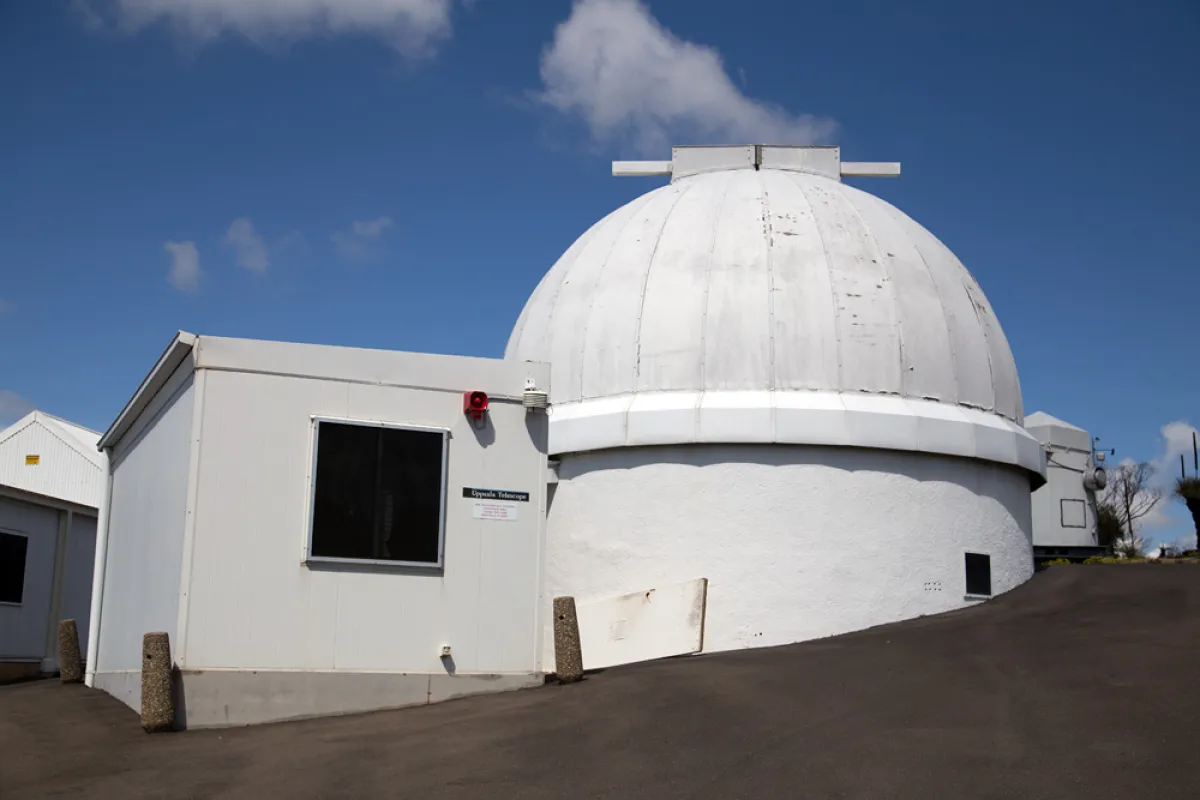Uppsala 0.5m Schmidt Near Earth Object Survey Telescope
Built in 1956 at the Uppsala Observatory workshop in Sweden, the Uppsala telescope was first located at Mount Stromlo Observatory (MSO) in 1957. This telescope played an important role in the eventual establishment of the observatory at Siding Spring.
Content navigation
About

Built in 1956 at the Uppsala Observatory workshop in Sweden, the Uppsala telescope was first located at Mount Stromlo Observatory (MSO) in 1957. This telescope played an important role in the eventual establishment of the observatory at Siding Spring. It was moved to Siding Spring Observatory from Mt Stromlo in 1982 and was employed in various photographic studies of the southern Milky Way, asteroid and comet discovery and imaging, and for various student projects.
The telescope had been used to discover and track near-Earth asteroids and comets, and is the telescope with which the Great Daylight Comet of 2007 (C/2006 P1) was discovered by Robert McNaught of RSAA.
Originally a manually operated photographic telescope, the Uppsala Southern Schmidt Telescope uses a spherical, rather than a parabolic, mirror with 0.5m correcting plate to achieve a 6 degree field of view. It had a 4K x 4K CCD camera mounted at the Newtonian focus, and computer-controlled telescope and dome pointing.
Observers used the Uppsala telescope at MSO to obtain the first known images and map the orbit of the Sputnik satellite - the first man-made satellite that was put into orbit around the Earth by Russia in 1957. In the political climate of the time, this achievement provided the opportunity for RSAA director, Bart Bok, to address a joint session of both houses of Parliament, which he ultimately used to obtain funding for a new observatory site and to gain political support for establishing the Anglo-Australian Telescope.
In 2020, the telescope was donated to the Tamworth Regional Astronomy Club Inc.
Location
Siding Spring Observatory
